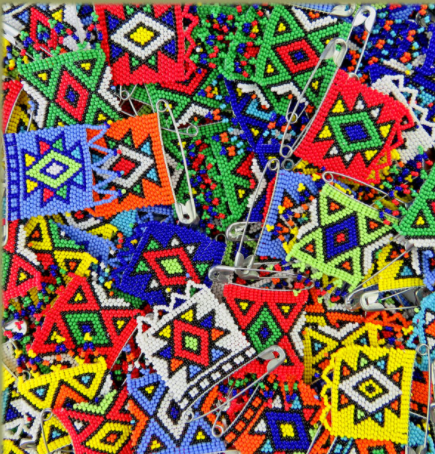The Zulu Love Letter
The Zulu Love Letter
Before the days of writing love letters, the Zulu women of South Africa used colorful beads to express their feelings and communicate messages regarding their gender and marital status. The Zulu Love Letter is a beaded rectangular flap attached to a narrow band of beads. The brightly colored glass beads originated from European traders. Each color was carefully chosen to convey a particular meaning.
White
Positive – Purity, Virginity, Faithfulness, True Love.
Negative – None.
Black
Positive – Marriage, regeneration.
Negative – Sorrow, despair, death
Red
Positive – Intense Love.
Negative – Anger, heartache.
Blue
Positive – Fidelity.
Negative – Loneliness – (I would fly the skies to be with you)
Green
Positive – Contentment.
Negative – Love Sick, (I have become as thin as a blade of grass pining for you)
Yellow
Positive – Wealth, Fertility.
Negative – Jealousy, withering away.
Patterns
The patterns the colored beads are arranged in will also create either a negative or positive meaning.
- When black and white are used together it represents marriage.
- Red next to black represents an aching heart.
- Blue and white represent fidelity – a conventional engagement symbol.
- Yellow, red and black conveys a mostly negative message and means there is a fear their relationship is withering away
The Triangle
The most common shape used in traditional Zulu beadwork is the triangle, the three corners represent Father, Mother, and Child. The triangle is used to indicate gender and marital status.
- If the tip is pointing up it represents an unmarried girl.
- If the tip is pointing down it represents an unmarried boy.
- A diamond shape, formed by two triangles together represents a married woman.
- When the two tips meet each other in the middle, creating an hourglass shape, it represents a married man.


